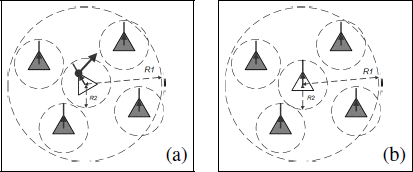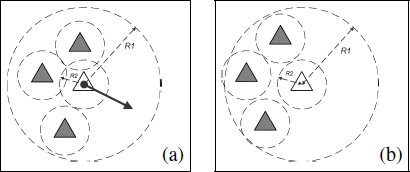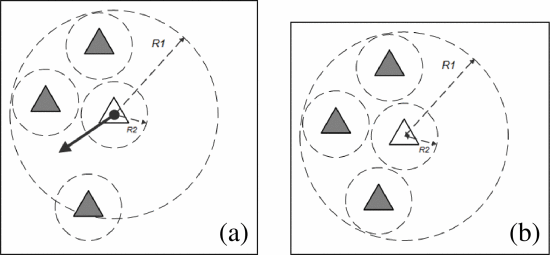Below are quoted from: Forestiero, Agostino, Clara Pizzuti, and Giandomenico Spezzano. "Flockstream: a bio-inspired algorithm for clustering evolving data streams." 2009 21st IEEE International Conference on Tools with Artificial Intelligence. IEEE, 2009.
Existing density-based data stream clustering algorithms use a two-phase scheme approach consisting of an online phase, in which raw data is processed to gather summary statistics, and an offline phase that generates the clusters by using the summary data. In this paper we propose a data stream clustering method based on a multi-agent system that uses a decentralized bottom-up self-organizing strategy to group similar data points. Data points are associated with agents and deployed onto a 2D space, to work simultaneously by applying a heuristic strategy based on a bio-inspired model, known as flocking model. Agents move onto the space for a fixed time and, when they encounter other agents into a predefined visibility range, they can decide to form a flock if they are similar. Flocks can join to form swarms of similar groups. This strategy allows to merge the two phases of density-based approaches and thus to avoid the offline cluster computation, since a swarm represents a cluster. Experimental results show the capability of the bio-inspired approach to obtain very good results on real and synthetic data sets.

Figure 1. Alignment rule

Figure 2. Separation rule

Figure 3. Cohesion rule










